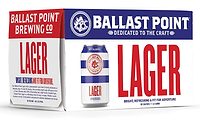Supermarkets looking for competitive balance
Beverages could be key to channel’s future, experts say
With non-traditional grocery channels ramping up their food and beverage selections, traditional formats such as supermarkets are turning their attention to price gaps and promotions to help level the playing field, analysts report. The traditional grocery channel experienced nearly 3 percent growth in 2010 with about $480 billion in sales, but saw its market share decrease just shy of one point to 46.8 percent, according to Barrington, Ill.-based Willard Bishop’s June 2011 report, “The Future of Food Retailing.”
Supermarkets also experienced an increase in sales at 1.5 percent for more than $412 billion in 2010; however, the channel’s market share decreased 1.1 percent to just more than 40 percent, the report states.
“Traditional supermarkets have had difficulty recovering from the recession and continue to lose market share as consumers reduce their spending, search for lower prices, or even shift their stock-up trips to limited-assortment stores, supercenters and even wholesale club [stores],” the research firm’s report explains.
Inflation also has played a role in the dollar sales growth and market share decline experienced by supermarkets, says Paul Weitzel, managing partner with Willard Bishop.
“Most retailers are seeing sales up slightly but units flat or down,” Weitzel says. “Most of the dollar growth is inflationary and behind many other channels in overall growth.”
The price is right
With competition from both traditional and non-traditional grocery formats, supermarket retailers are instituting new price points to entice consumers.
“There’s just a lot more intense focus today on price gaps between your store and your competitive store,” Weitzel says. “And even within your store, when you look at a category between something like a private [label] brand and a national brand, [retailers need to be] making sure they’re thinking very keen about maintaining the right gaps across the board.”
He adds that a traditional supermarket, for example, could have a 17 to 20 point price gap compared to a supercenter, and a gap with a competitive grocery store could be between a 5 to 10 percent difference.
Promotional pricing also is capturing retailers’ attention.
“The second biggest focus is around promotion,” Weitzel says. “Unfortunately, I think what we see out there is too many promotions — a lot of promotions that just don’t work, but [retailers] are just very nervous about trips, traffic and market share, so today we see 7,000 price changes in a week in a store.”
About 15 to 20 years ago, stores instituted only 3,000 to 4,000 price changes in a week, Weitzel says.
“Sometimes it’s harder for shoppers to see what’s going on on the shelf with all [the items],” he says. “You’ve got new items, organic items, healthy items, discontinued items, there’s just a lot going on on the shelf, but they’re very nervous about being competitive, so between managing the prices and having a strategy there’s just a lot of promotional activity.”
Fitting in the mix
In addition to focusing on price gaps and promotional activity, supermarket retailers are turning to the products and categories that can help the channel regain its market share. In a traditional supermarket, chilled, frozen and ambient beverages represent
6 percent of a store’s SKUs, but generate 16 percent of store sales today, Weitzel says.
“Beverages can play a significant role in building store traffic,” he says. “Milk, soft drinks and bottled water need to be priced competitively today as they do generate store traffic. With all of the choices today where consumers can purchase groceries, these categories play a significant role in building important store traffic.”
Beverages also could be key in other tactics instituted by supermarket retailers such as clustering categories. Weitzel says the most successful retailers are clustering categories based on shopper demand patterns. The market research firm also is seeing a push toward ensuring core assortment is correct in every store and that the assortment is tailored to shopper demographics, lifestyles and demand patterns of each location, he adds.
“In the future, we will see more category clusters that will be different even within store clusters,” Weitzel says. “Some categories will have little variation in assortment across stores while others will have a lot of variation in assortment across stores and store clusters. I think beverages will generally be in the above-average cluster variation range and will increasingly need adjustment to assortments.”
Because beverage categories could play an important role in helping to drive trips for retail channels, including traditional grocers, continued pressure will be placed on beverage margins, Weitzel says. In order to offset these demands, he anticipates that further advancements will take place within the distribution and handling networks.
“We expect to see more use of pallets and modular displays that will allow retailers and [direct-store distribution] operators to move large quantities of beverage products more efficiently,” Weitzel says. BI
Looking for a reprint of this article?
From high-res PDFs to custom plaques, order your copy today!







